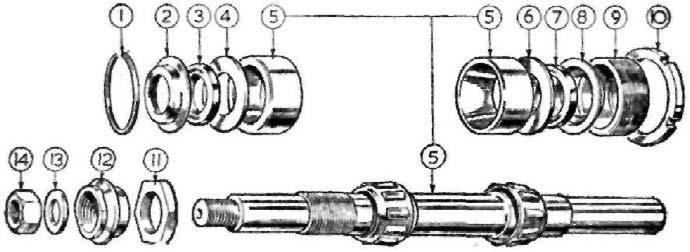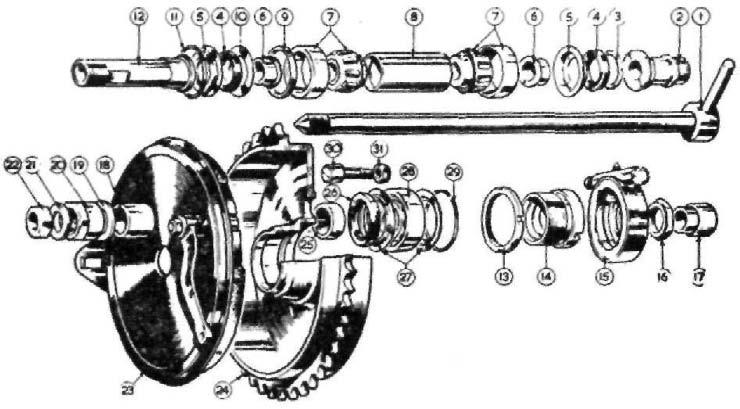
2 minute read
Recommended lubricants
from a close grained felt, supported by a wire cage, the cage is not detachable. The filter is mounted in the front of the drive side crankcase and is retained by a cap washer, spring and plated dome nut. At the far end of the filter, a steel cup is fitted to support the filter and sea] the filter end, so that all returned oil will pass through the filter. To remove the fabric filter. Using the Allen Key 018667 supplied in the tool kit, unscrew the domed nut and take out the spring. If the ends of a pair of round nosed pliers are opened outwards (to grip the inside of the cup washer) the washer and filter can be extracted from the crankcase.
It may so happen that the washer only will come out, if so, the filter can also be extracted in a similar manner. It is also possible that the steel cap washer, at the far end of the filter, will remain in the crankcase, if so this is of no consequence. The filter should be handled with care and if damaged it should be discarded and replaced by a new one.
To clean the filter it should be immersed in petrol and when thoroughly clean it should then be allowed to dry before re-insertion. To remove magnetic filter. Incorporated with the crankcase sump plug is a powerful magnet, which does not require frequent attention. For cleaning place a tray under the crankcase, unscrew the sump plug, with the use of a good fitting ring spanner.
Metal particles adhering to the magnet can be removed by wiping with a grease coated rag, the grease will collect metal particles on the rag. Keep the magnet away from large pieces of steel or iron, as contact can impair the efficiency of the magnet. Adjustment of oil feed. The internal flow of oil is controlled by fixed restrictions, with the exception of the oil feed to the inlet valve guide, which is regulated by a needle pointed screw located in the cylinder head (see Fig. 4) and secured by a locknut.
To adjust the oil feed loosen the lock nut and screw home lightly the regulating screw, then unscrew it the smallest amount possible and retighten the lock nut.
An excess of oil to the inlet valve guide will cause a smoky exhaust and heavy oil consumption. Insufficient oil can cause the valve to run dry with a squeaking noise. Exhaust valve stem lubrication (before 1964). From a drilling in the exhaust rocker axle boss in the rocker box, oil is fed to a cavity in the cylinder head. A further drilling from this cavity, through the cylinder head to an oil hole in the valve guide, provides positive lubrication for this part of the engine and needs no adjustment. Crankcase release valve. Crankcase pressure is released into the atmosphere through a timed and ported release valve. The ported portion for this valve is situated between the two driving side bearings, the valve outlet is adjacent to the gear box housing. The valve cannot become deranged and needs no attention. Gear box lubrication. To top up or replenish oil for the gear box remove the inspection plate secured by two screws on the gear box end cover.
Use one of the grades of oil specified, on no account must grease be used,




